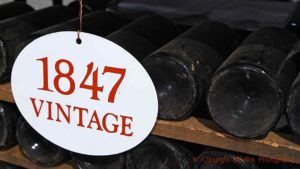The Douro Valley used to be all about port wine. No longer. The production of dry wines (called “Douro wines”), have increased incredibly in recent years. This is a trend created by the smaller growers that emerged after 1986 when it became possible for small producers to sell and export their wines.
Previously it was just the large port wine houses that could export. A pioneer for production of dry wines is Domingos Alves de Sousa at Quinta da Gaivosa. We met his son Tiago, the winemaker, and asked what’s in his focus right now. The answer is Russia, which has become a major export country for port wine, white wines and reduced sulphite levels.
Tiago already makes magnificent white Douro wines, but, he says, it is a challenge to find suitable plots for white grapes within their vineyards. “Making dry wines is different than making port wine, it requires a different way of working in the vineyard.” He is looking for cooler places to be able to make white wines with good acidity and aromas.
When it comes to sulphites, he proudly announced that he has been able to halve the use of sulphites in his wines thanks to the addition of selected yeasts that protect against oxidation, one aspect of so-called bioprotection.













